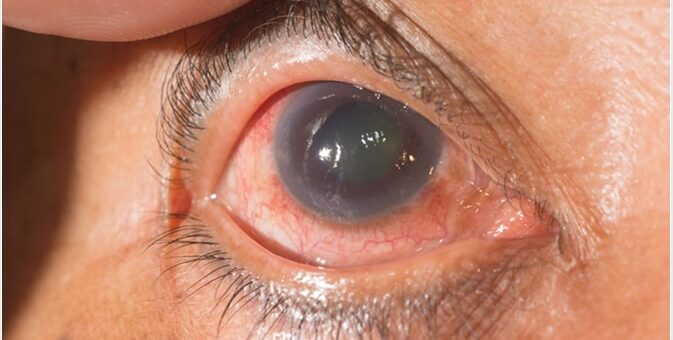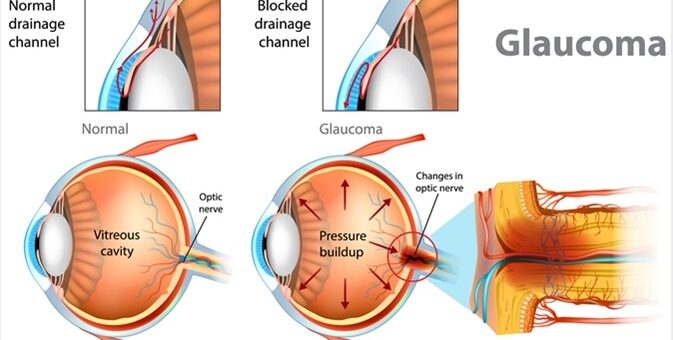Glaucoma results from damage to the optic nerve. Usually, the damage is from increased pressure in the eye. The damage to the eye is irreversible and glaucoma can lead to blindness. The most common form, open-angle glaucoma, generally appears in middle age and seems to have a genetic component. In this type of glaucoma, vision loss occurs very gradually. One eye is often worse than the other. Other types of glaucoma are closed-angle glaucoma (a medical emergency) and congenital glaucoma (present at birth). Secondary glaucoma is usually associated with another eye disease or disorder, such as a very mature cataract, uveitis, bleeding, eye tumor, or an eye injury.


This is the most common and chronic form of Glaucoma that causes damage to the optic nerve. Loss of vision occurs gradually and painlessly. At UMAPREM NETRALAY, we have some of the best Glaucoma surgeons in Varanasi, India who diagnose Glaucoma through the latest state-of-the-art machines so that your vision can be preserved to prevent blindness.
If Angle-closure Glaucoma is not treated in time, it can result in complete loss of sight. Some of the common symptoms of this condition are severe pain in the eyes, distorted vision, headache, vomiting, etc. At UMAPREM NETRALAY one of the best eye hospitals in Varanasi for Glaucoma, we use world-class equipment to diagnose and treat Glaucoma before it can cause any further damage to your eyes.
Since the treatment methods for open-angle and angle-closure glaucoma are different, it is important to identify the mechanism involved. The diagnosis (or exclusion) of glaucoma requires a detailed and comprehensive eye examination. At our center doctor will do the following examinations: To detect glaucoma your doctor will do the following examinations: a routine vision test that requires reading letters from a chart, Slit lamp (microscope) examination: This special microscope is the ophthalmologist’s ophthalmoscope and all patients, not just those suspected of having glaucoma, must undergo a slit lamp examination. The pressure inside the eye is measured with an ‘applanation tonometer’ attached to the slit lamp. A handheld version of the instrument is also effective. It may be necessary to obtain multiple readings of the pressure during the day and at night. The older method of resting an instrument on the cornea while the patient lies down is not accurate. The newer non-contact airsoft (computerized) instrument may be good for screening but cannot be used for diagnosis or treatment of glaucoma. An examination of the angle of the eye is done with the help of a gonioscope.
The above two steps require the use of drops to eliminate the sensation in the eye. The drops may burn a little bit. An optic disc examination on a dilated eye is also required. The doctor will usually instill eye drops to dilate the pupil to facilitate examination of the optic disc and the back of the eye, the retina. For obtaining a stereoscopic view on the microscope a hand-held lens or a contact lens is the best method. A computerized scan of the optic disc may also be done. To confirm the diagnosis, the doctor will conduct an automated field or perimetry test. Damage to the optic nerve limits the field of vision, but regular vision, i.e. the ability to read an ophthalmologist’s eye chart, is affected at a much later stage. In its early stages, glaucoma can only be detected or monitored by using an automated perimetry test. A normal patient will have a ‘full-field vision’, while a person with glaucoma has black, non-seeing areas in the field of vision.
Many people have difficulty doing the perimetry test at first and maybe better at it the second or the third time. Baseline tests are necessary for future comparison and periodic examinations are essential to check the progression of the disease. Considering the importance of the test, ANY automated perimeter is NOT acceptable. The field test is subjective and it is important to have a calibrated machine with an appropriate normal database against which to compare your results.
The treatment for glaucoma is essentially to lower the pressure in the eye, which can be achieved by three diverse ways:

UmaPrem Netralay is the best eye care hospital in Uttar Pradesh. They have a good environment for every patient. It is established by Dr. Arun Kumar Gupta. Dr. Arun Kumar Gupta is an experienced Ophthalmologist and also a gold Medalist.
©2023 UMAPREM NETRALAY. All Rights Reserved. Design and developed by E-Data Web Center & Raj Tech.